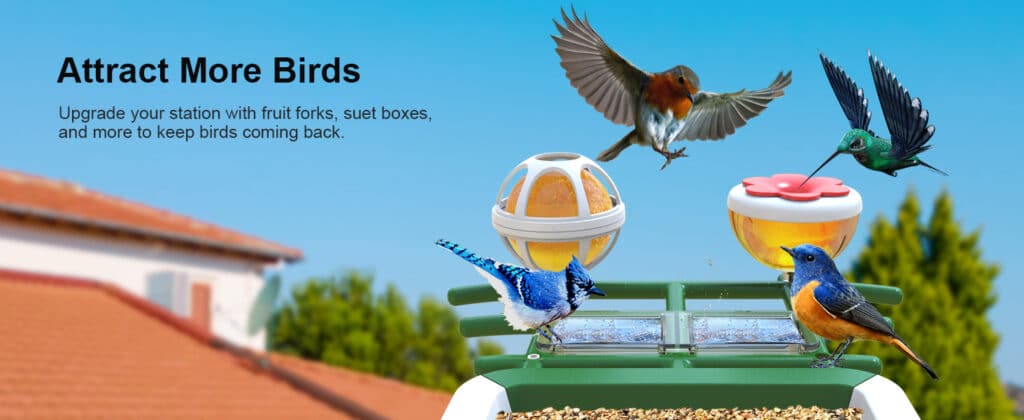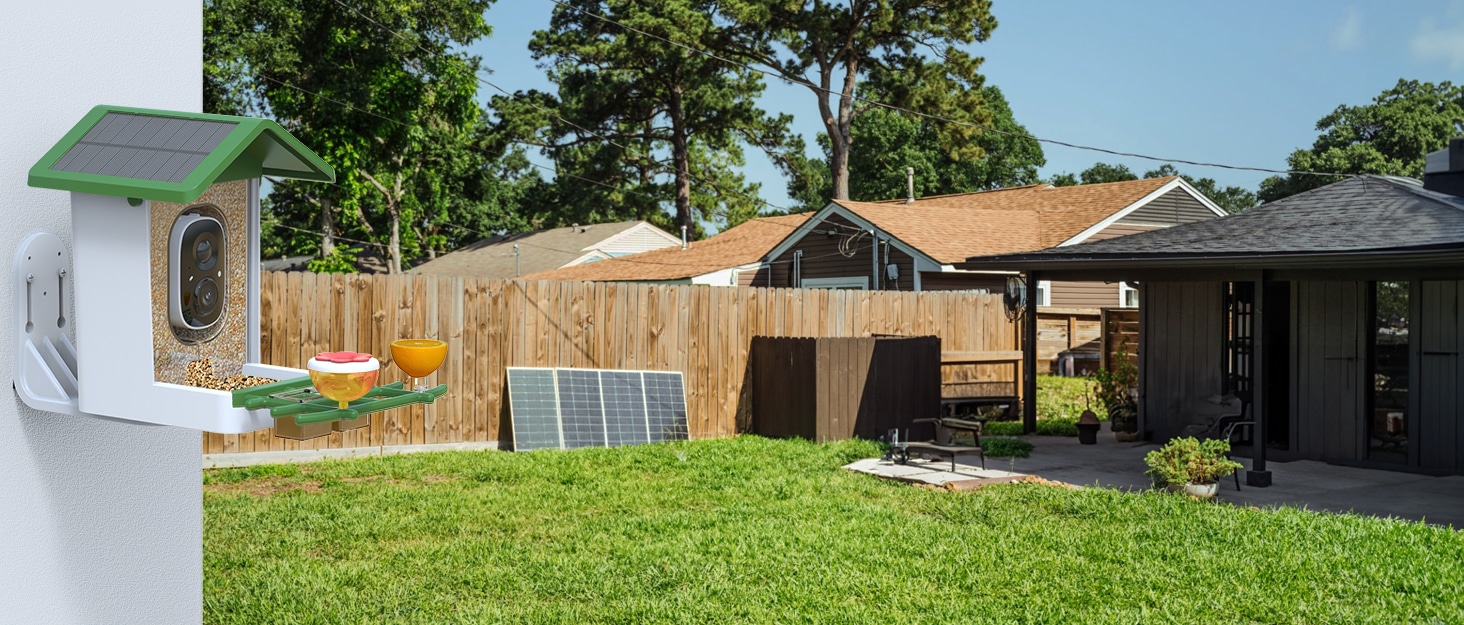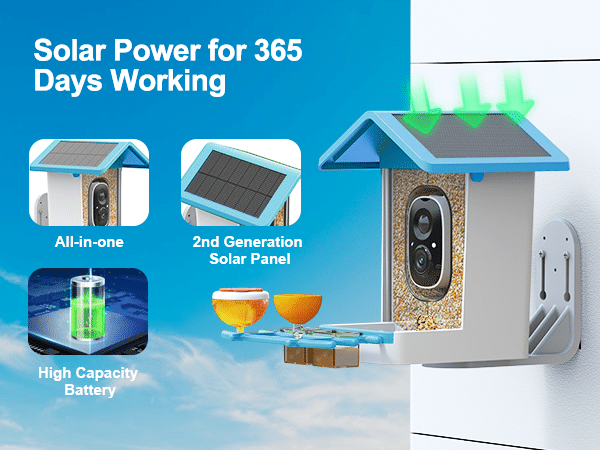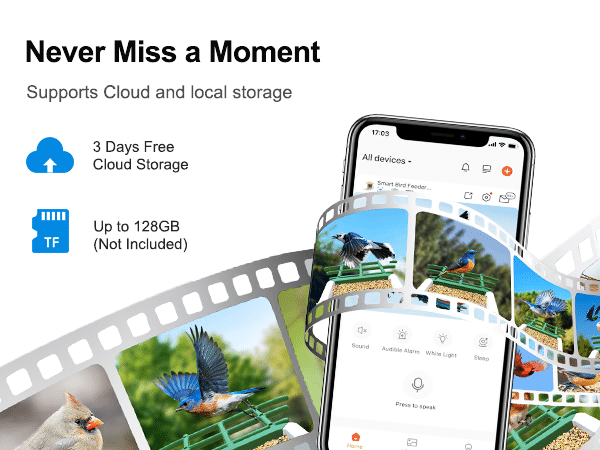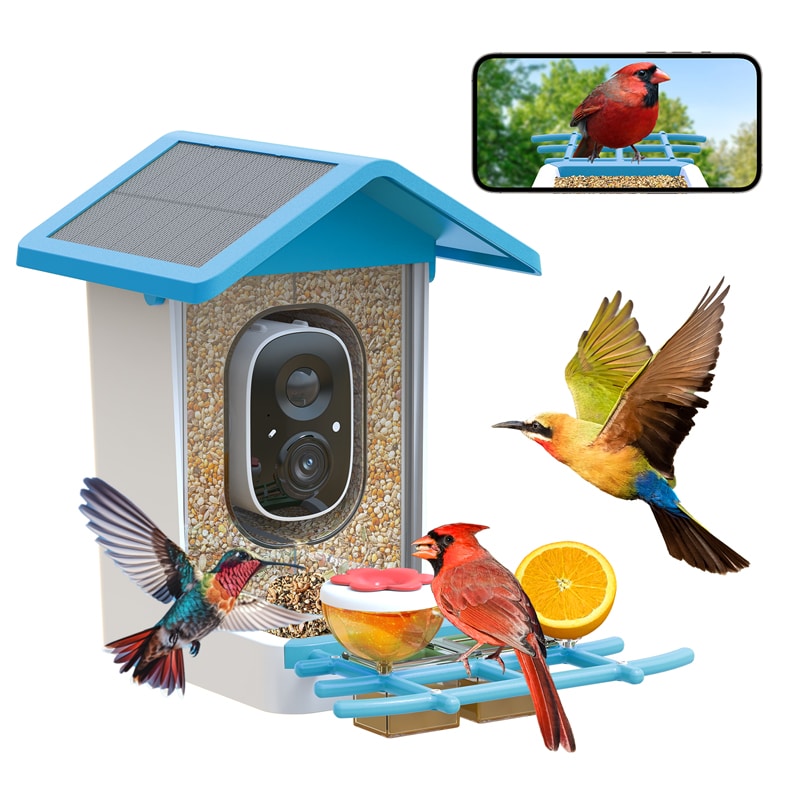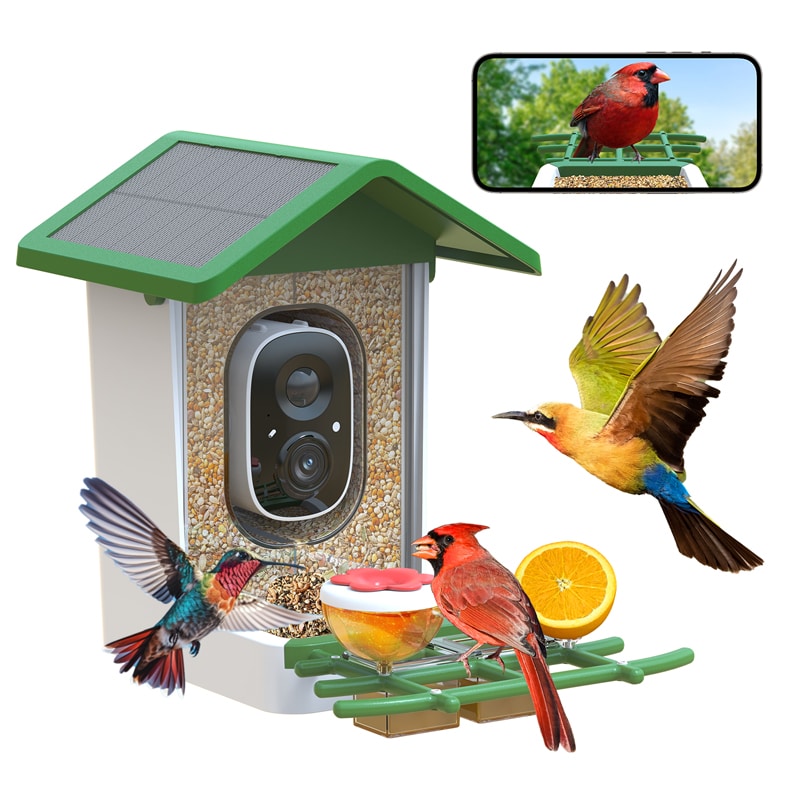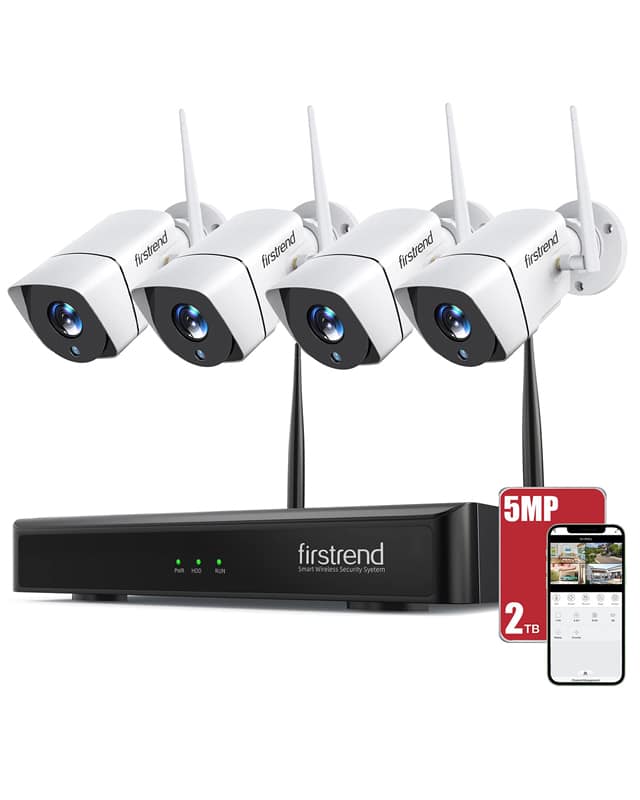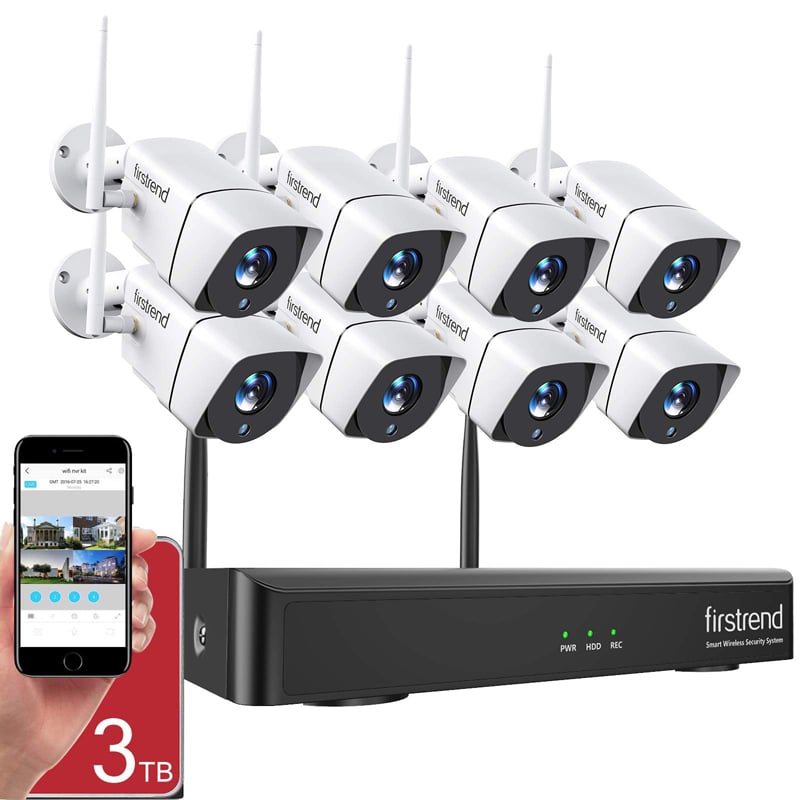More and more homeowners are experiencing the peaceful joy of birdwatching in their own backyard. If you’re one of them, you might be wondering how to entice more varieties of birds, without more cords, batteries, and energy bills. The answer? A solar bird feeder. This eco-friendly option runs on the sun and, once installed properly, can bring color, song, and wildlife to your outdoor space all year round.
In this guide, we’ll explore why solar bird feeders work so well, how to choose the best one, and simple tips to make your yard more inviting to feathered visitors.
Why a Solar Bird Feeder Makes Birdwatching Easier and Greener
Classic bird feeders are wonderful, but they have some drawbacks. A lot of intelligent bird feeders need to be charged all the time or have batteries replaced, and cords make them hard to place. Solar bird feeders, however, provide a cord-free, low-maintenance experience. They use the sun for power, so they can be placed anywhere the sun shines—whether that’s in a garden, on a fence, or hanging from a tree.
Other models have intelligent features like cameras as well, so you can see birds from a proximity distance without scaring them away. Others even have night vision and push notifications on your phone, which means that you can track bird movement in real-time, day or night.
A great example is Firstrend’s solar bird feeder camera, which offers solar charging along with high-definition video and smart detection. It is ideal for individuals who would love to watch birds and capture moments at ease, with no complicated installations or frequent recharges.
How to Choose the Right Solar Bird Feeder for Outdoor Use
Prioritize Smart Features Providing Value
If you enjoy identifying different species or enjoy displaying bird moments to family members or friends, a solar bird feeder camera is the best option. Look for feeders with motion sensors that trigger recording or live video feed. Firstrend’s offering, for instance, offers 1080P HD video, night vision, and motion notification via a mobile app, making birdwatching a more interactive experience.
It’s perfect for families and hobbyists who’d like to learn more about the birds in the backyard without the need to use binoculars or be pinned by the window.
Prioritize Durability and Functional Design
Outdoor feeders are subject to the weather, so they need to be tough. Choose a feeder that’s weather-proof, UV-coated, and rust-proof to keep it operating in sunshine, rain, and snow. A large capacity—around 2L—is also handy, as it means you’ll have to refill it less.
Some of them, like Firstrend’s, are designed to withstand as much as repel critters. Its smart model comes with an alarm system and two-way sound, so you can scare away squirrels or raccoons remotely. That way, the seed is left for the birds—and not the critters from down the street.
Easy Setup and Wireless Connectivity
The most effective solar bird feeders are fully wireless and simple to set up. Firstrend’s model hooks into 2.4GHz Wi-Fi, doesn’t need drilling or any special equipment, and comes with a rechargeable battery that is built right in and powers the solar panel for around-the-clock use—even on cloudy days or at night.
This makes it possible to have complete flexibility in location—whether that’s in a flower bed, on a patio, or even outside an apartment window.
5 Real-World Tips to Get More Birds to Visit Your Feeder
Regardless of what the top-rated solar bird feeder is, consistent bird traffic depends on a little planning. The following are some tried-and-true tips:
1. Vary the Seed Selection
Different birds prefer different seeds. Black-oil sunflower seeds invite cardinals and finches, and millet invites sparrows and doves. Offering a mix of seeds will invite more species.
2. Locate the Right Spot
Place the feeder near natural cover like trees or shrubs so that birds have easy access to hide from predators. Ideally, choose a place with some shade and minimal foot traffic.
If you are using a camera feeder like Firstrend’s, choose a spot with good visibility and light for optimal video recording.
3. Keep Feeders Clean and Full
Dirty feeders can deter birds and even spread disease. Wash your feeder every couple of weeks and check for clumped or moldy seeds. Firstrend’s smart feeder helps with this by sending alerts when seed levels are low, so you’ll never forget a refill.
4. Add Water Features Nearby
Install a birdbath or fountain, and birds will be encouraged to visit and bathe and drink, especially in dry years. Providing food and water on your yard makes the yard a more appealing and service-rich stopover for birds.
5. Discourage Squirrels and Other Pests
Squirrels will raid seed supplies quickly and drive birds off. Choose a feeder that has squirrel-proof features or smart deterrents like Firstrend’s two-way talk or alarm sound that you can activate directly from your phone.
Why Firstrend Dominates Smart Solar Bird Feeders
If you’re looking for a universal solar bird feeder for outdoor use, Firstrend offers a smart, hassle-free solution. Here’s why it’s the best:
- 1080P camera with night vision for both day and evening observation
- Solar + rechargeable battery set to provide a steady power supply
- Notifications and motion alerts in real time through an easy-to-use app
- Two-way speaker and smart alarm to discourage uninvited visitors
- Season-defying weather-proof materials
For yourself or for gift to friends who love watching birds, Firstrend smart bird feeder turns watching birds easy, informative, and fun.
Final Thoughts
Attracting birds doesn’t require simply hanging a feeder; it involves making an inviting environment. A solar bird feeder does that more easily with wireless convenience, energy saving, and smart features that add enjoyment.
If you’re prepared to elevate your birdwatching practice, Firstrend’s solar bird feeder camera is a great choice. It combines technology and nature appreciation in the most harmonized way—perfect for backyards of any size, and bird lovers of all generations.


